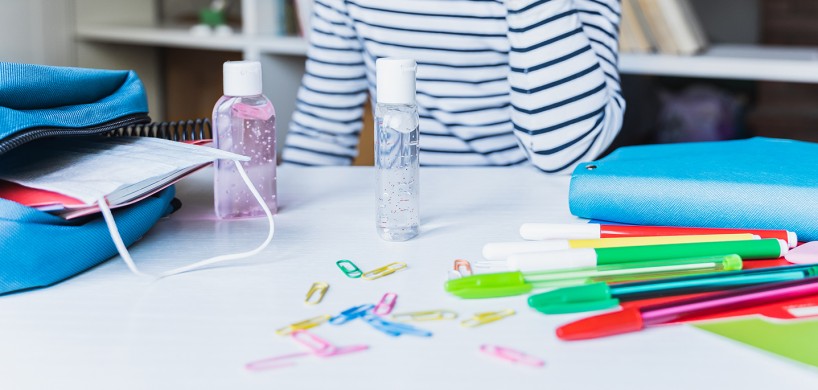Where Germs and Bacteria Hide

Where Germs and Bacteria Hide
Although it is important to realise that cleaning practices throughout the country may be different depending on staffing, cleaning formulas, enrolment, size of the school and more, there are also a number of similarities. Every school facility needs to be cleaned in its entirety, but there are certain areas that require extra attention.
Tackle these top hotspots and your commercial cleaners can improve the health of students, staff and visitors.
Drinking Fountains
A drinking fountain often contains germs and bacteria that can cause illnesses, or can transmit harmful or highly contagious viruses. Daily cleaning and sanitising of drinking fountains are vital steps to reduce possible bacteria contamination.
By scheduling daily cleaning and disinfecting procedures, as well as weekly maintenance duties, you can limit the spread of bacteria and maintain a healthy school environment. Ensuring that the drinking fountains are void of bacteria requires consistent cleaning and routine maintenance.
Cafeteria Tables
First and foremost, cleaning teams must educate occupants to wash their hands before and after cleaning.
There have been many studies conducted on this one. All have consistently indicated that cafeteria tables continue to be one of the most germ and bacteria-laden surfaces in schools.
When you think about it, tables are one of the most frequent gathering places for students who can contribute to contamination through sneezing, touching and coughing. If you add in the factor that the tables may not be on a regular cleaning schedule, any food residue that is left behind could harbour bacteria growth.
It is important to allow time for adequate cleaning practices on a routine schedule.
Restrooms
It should be no surprise that restrooms can be one of the most unsanitary places in any facility. All areas of the restroom should be cleaned and sanitised daily, including all the usual touch points: handles, doorknobs, sinks, taps and dispensing handles. These are commonly touched and prone to excess moisture, an environment where germs and bacteria thrive.
Restrooms normally start out clean, however, germs and bacteria build-up throughout the day. Implementing a routine of frequent cleaning, sanitizing and disinfecting throughout the day will minimize the risk to students and staff.
School Buses — You would never think that buses could be the source of a contamination problem, but it is worth exploring. School buses are rarely if ever, cleaned properly, let alone sanitized and disinfected. Because buses are often missed, they pose a very high risk of spreading viruses and bacteria to students and staff.
The reality is, kids often lick the upholstery and condensation on the windows. When you couple that with the usual coughing, sneezing and touching in a closed space, it is easy to see how school buses are a likely hotspot to spread germs and bacteria. If possible, work with your staff and, at minimum, make an attempt to have a bus cleaning program in place.
Gymnasiums/Locker Rooms/Weight Rooms — Gymnasiums are another top candidate to harbour germs. While it’s impossible for every square foot of a school to be sanitized, some common hotspot areas deserve special attention. These areas are commonly used after hours and on weekends, and therefore pose challenges to regular cleaning.
In addition, poorly ventilated areas with sweat and other bodily fluids are often ignored between classes. Work with your school departments to incorporate a plan to clean all floors, weight equipment, sports equipment and fitness machines. Keep in mind that bacteria thrive in warm and moist environments such as showers and on any other surface that comes in contact with bodily fluids.
Wrestling Mats/Sports Equipment — Wrestling is a contact sport that exposes athletes to all kinds of bacteria, making cleaning and sanitizing mats essential. In line with gymnasiums and locker rooms, wrestling mats are the most likely cause of staph and MRSA infections in a school.
These areas are often not cleaned and disinfected by custodial staff but by other departments that may not allow enough dwell time or use a disinfectant with the right kill claims. Because of that alone, these areas are breeding grounds for bacteria and viruses to spread to students.
Sports helmets, basketballs and other sports gear also need to be regularly sanitized or disinfected to help minimize the risk of exposure. Work with your departments and athletics to comprise a program or schedule to routinely clean and sanitize and disinfect contact surfaces daily — or at least immediately prior to each use or event.
HVAC/Ventilation — While the custodial worker responsibility mainly focuses on the ground floor, poor classroom ventilation may be a common challenge, exposing students and staff to contaminants in the air. Ventilation systems are an often-overlooked area in any building and rarely get the attention they deserve.
Custodial responsibility usually focuses on cleaning the outside of the vents on a regular basis, then follow up with a cleaning solution. This will remove germs and dust from breeding on the surface of the vent and prevent any allergens from blowing in the air.
School maintenance departments should also have a preventative maintenance plan to inspec
Student Desks, Table Tops, Door Knobs, Handrails, Keyboards and Other Shared Devices — These hotspots can go on and on. What do you think these areas all have in common? You guessed it, they’re all common areas. Everyone on a school campus has access to them.
These areas are also considered common “high touchpoint” areas and should be routinely cleaned and sanitized as your cleaning program allows. Yes, cleaning for appearance is important, but cleaning for health can make a much bigger impact on your school campus.
No matter which surface or hotspots harbour germs and bacteria, schools are one of the most important places to ensure a clean, safe, well maintained and healthy environment. Simply adjusting cleaning frequencies and using environmentally preferred green cleaning solutions goes a long way toward protecting students and faculty health — cleaning matters.



